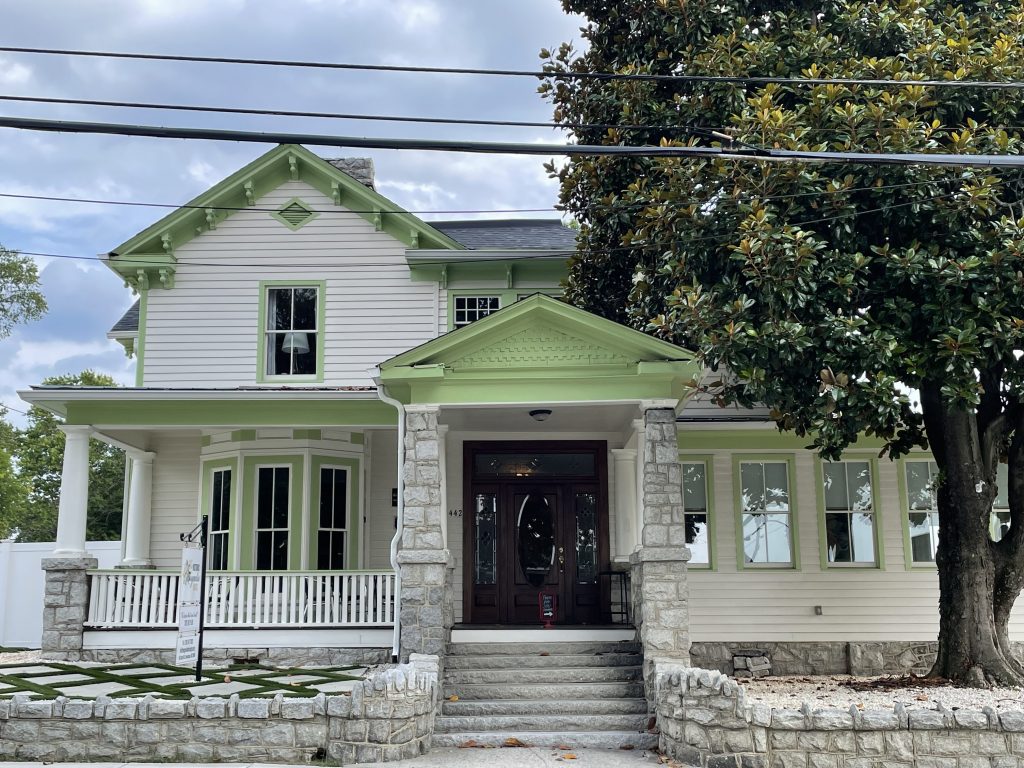
Doug and I had both listened to Driving While Black: African American Travel and the Road to Civil Rights by Gretchen Sullivan Sorin.
The book was eye-opening and heartbreaking, to say the least. It tells the story of how in the early days of automobile travel in the U.S., the country opened up to offer thousands of opportunities and sites to visit — unless you happened to be black. Then you had to think about things most people take for granted these days. Where will you sleep? Eat? Go to the bathroom? Even stop and stretch out? The Negro Motorist Green Book tried to help black travelers by letting them know safe places to stop along the way.
There’s also an extremely well-rated movie, Green Book, on this topic, which we haven’t watched yet, but it’s on our short list.
Needless to say, when I saw that we could have dinner at a Green Book inn, we both knew we wanted to go. The Historic Magnolia House is located in Greensboro. You can spend the night, and they have a limited restaurant schedule for lunch, dinner, and brunch.
The inn is excited to tout their historic past, and they have a number of displays set up in rooms on the first floor by the dining room. The inn opened in 1949, and was one of the few stops for African Americans between Atlanta, Ga., and Richmond, Va. You can read about the history, see some of the famous guests who stayed there, and watch a video on the Green Book here.
We had a fabulous and beautifully presented dinner and we were really glad we made the effort to get here. I had shrimp and cheese grits, and Doug had barbecue ribs and smoked turkey collard greens, which you can see on our North Carolina foods post.
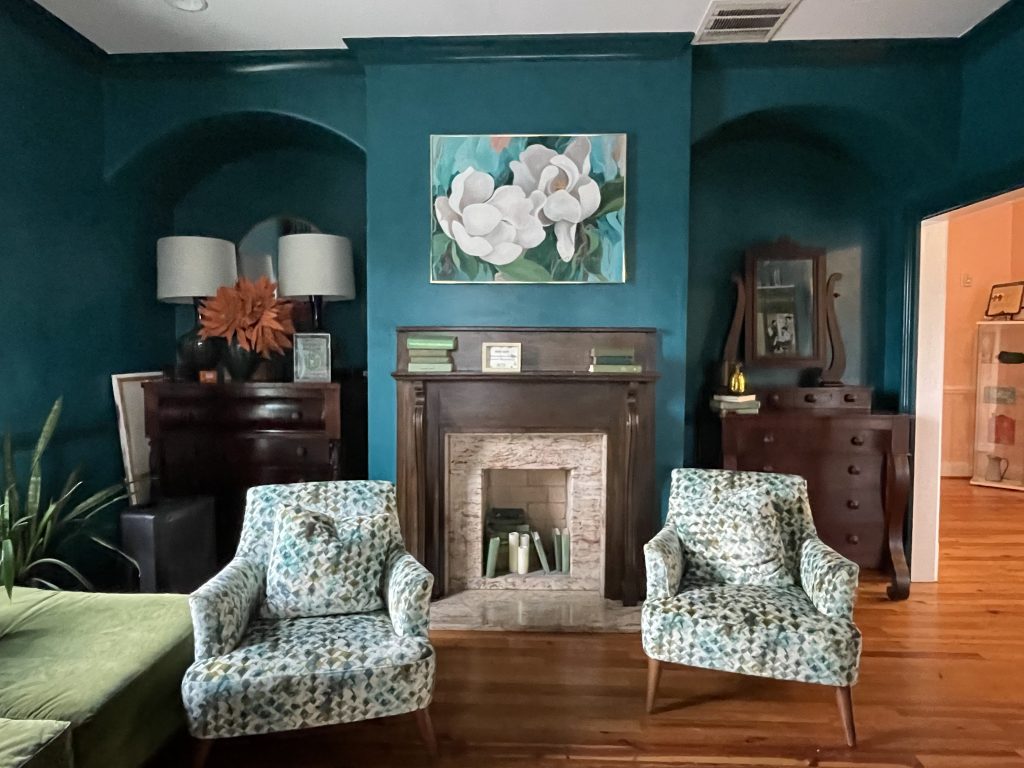
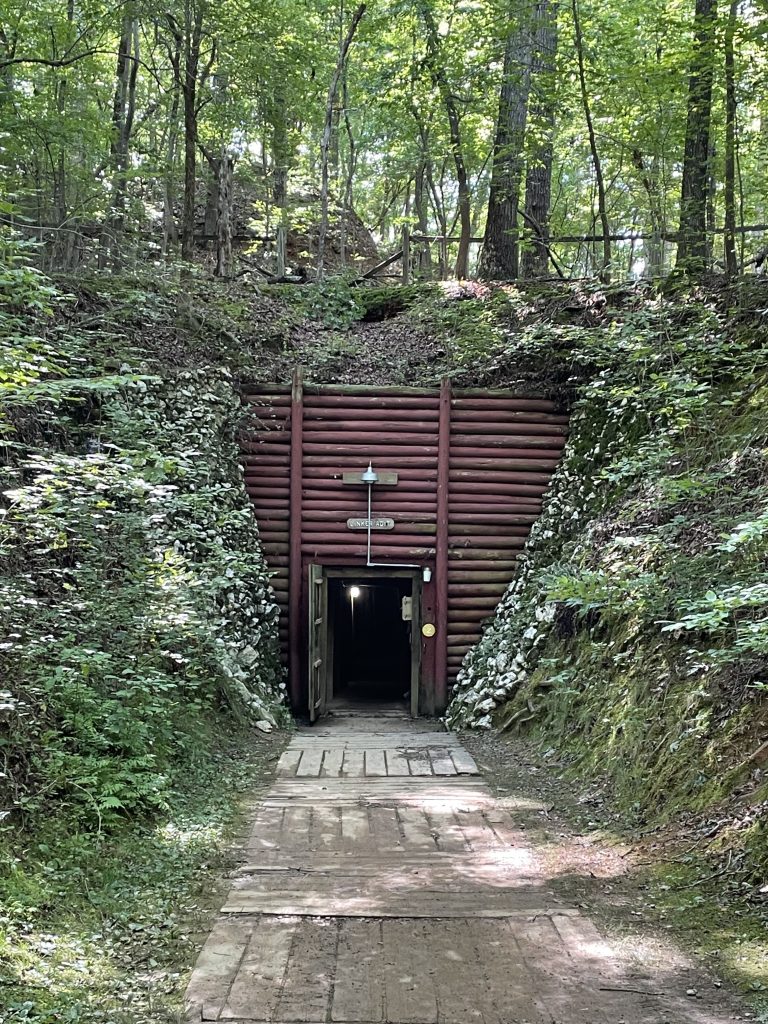
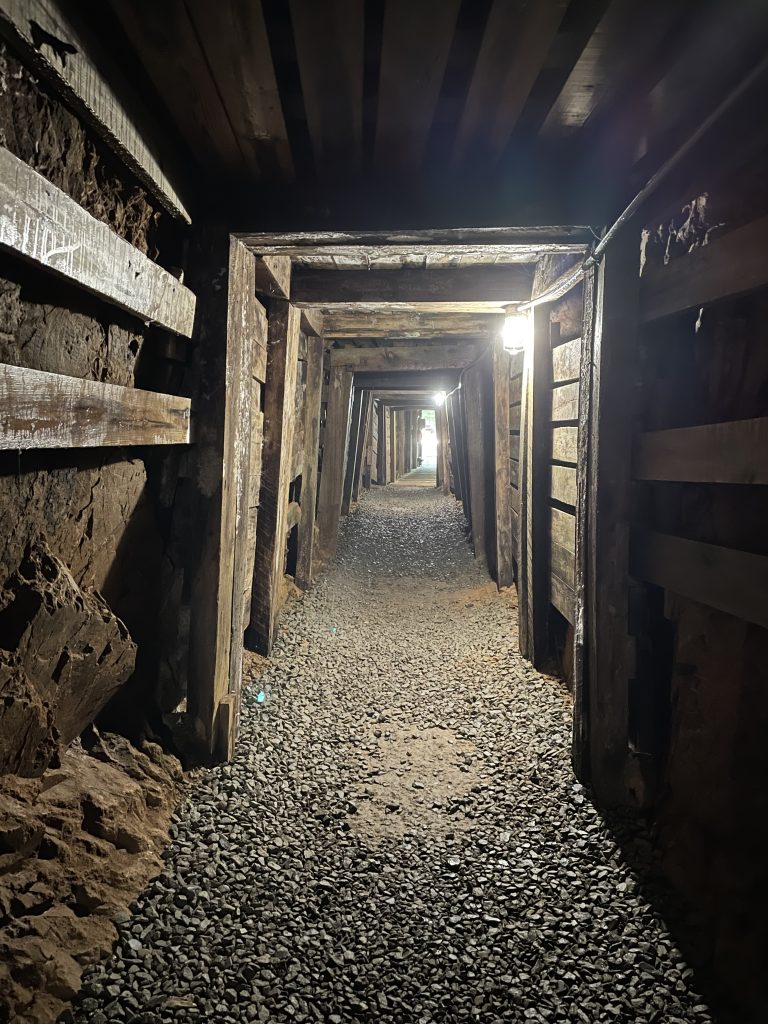
In 1799, 12-year-old Conrad found a large, shiny rock in Midland that seemed interesting, so he brought it home and his family used it as a door-stop for three years.
Eventually, his father John became curious and took it to a jeweler to get it identified, and turned out to be a 17-pound block of gold.
The jeweler gave him $3.50 for it, even though its real value was $3,600.
Needless to say, the gold rush was on at that point, and a year later a 28-pound gold nugget was unearthed. The search for gold remained on the surface for years, but in 1831, a shaft was sunk and underground mining ensued. Success was elusive, and the mine changed hands many times; the last big find was in 1896, when a nearly 23-pound nugget was found.
Our stop at the Reed Gold Mine included exploring the museum and doing a self-guided tour into the mine; after we joined a group that panned for gold. It was a ridiculously labor-intensive process to look for flakes, it is inconceivable how anyone could make a living doing it –– especially our group, where not one flake was found among a dozen prospectors. I was so, so surprised not to find anything!
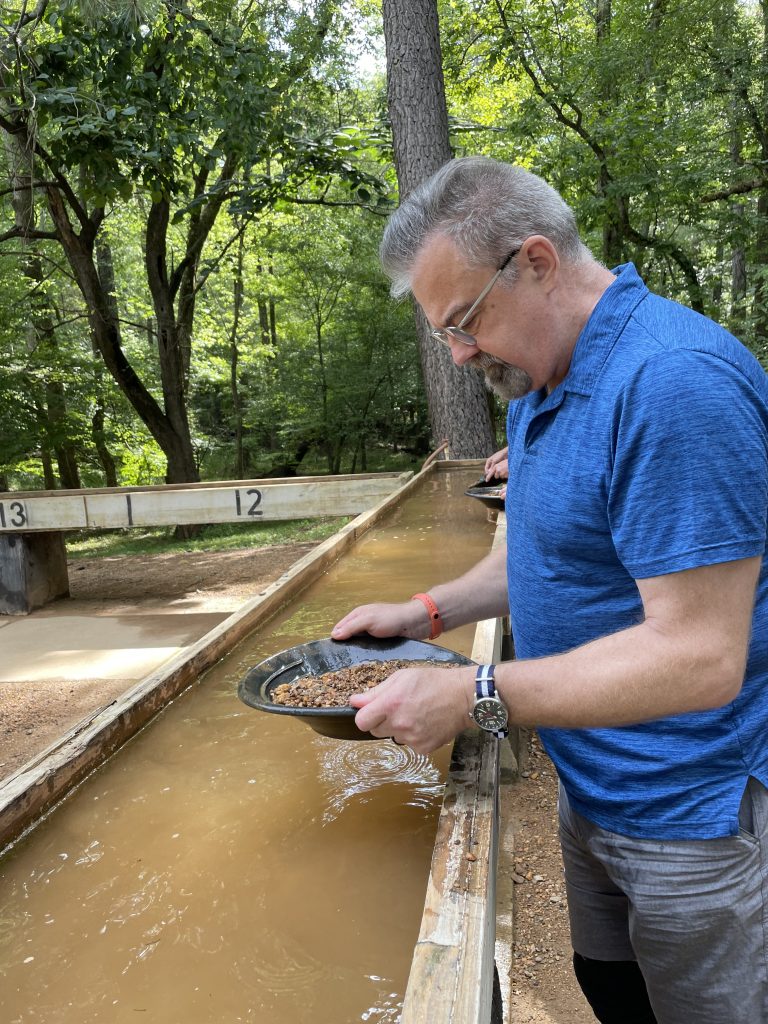
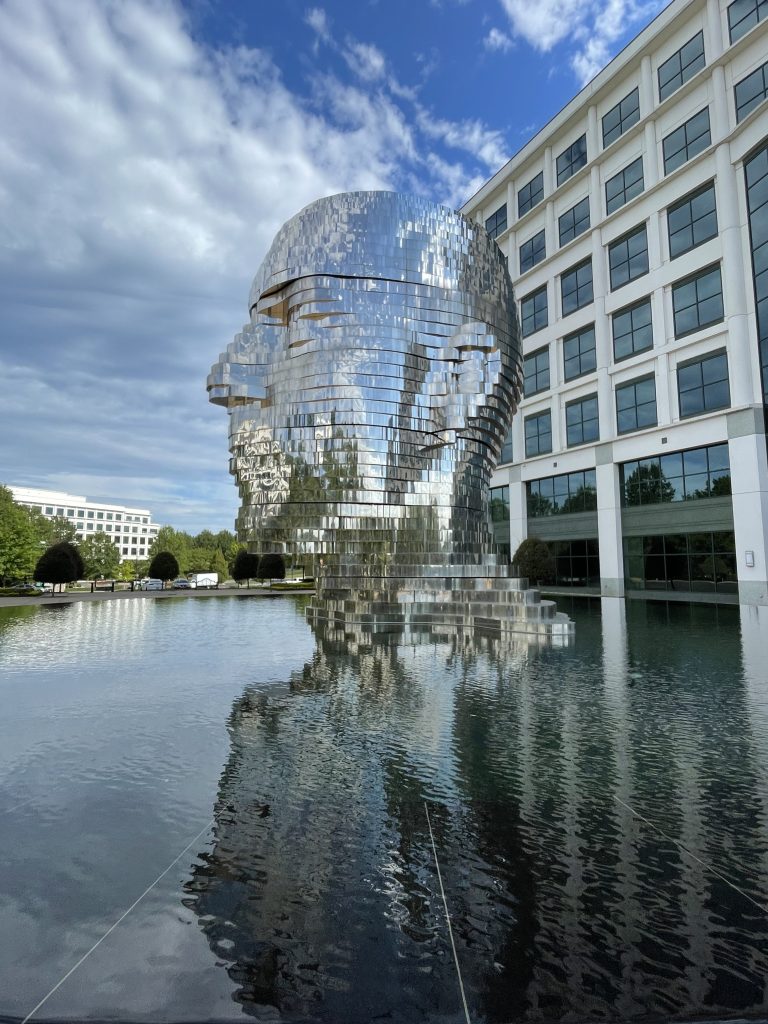

We visited the Billy Graham Library in Charlotte out of curiosity more than anything else. Unbeknownst to me, the self-guided “Journey of Discovery” was not completely at your own pace; we were shuffled from room to room with the doors closing us in to watch a video or otherwise be informed. I had some panic that were we literally trapped there and entertained the idea of feigning an illness, when after a few rooms we were left to our own devices until the very end when we were closed in again until that room’s video was shown in its entirety.
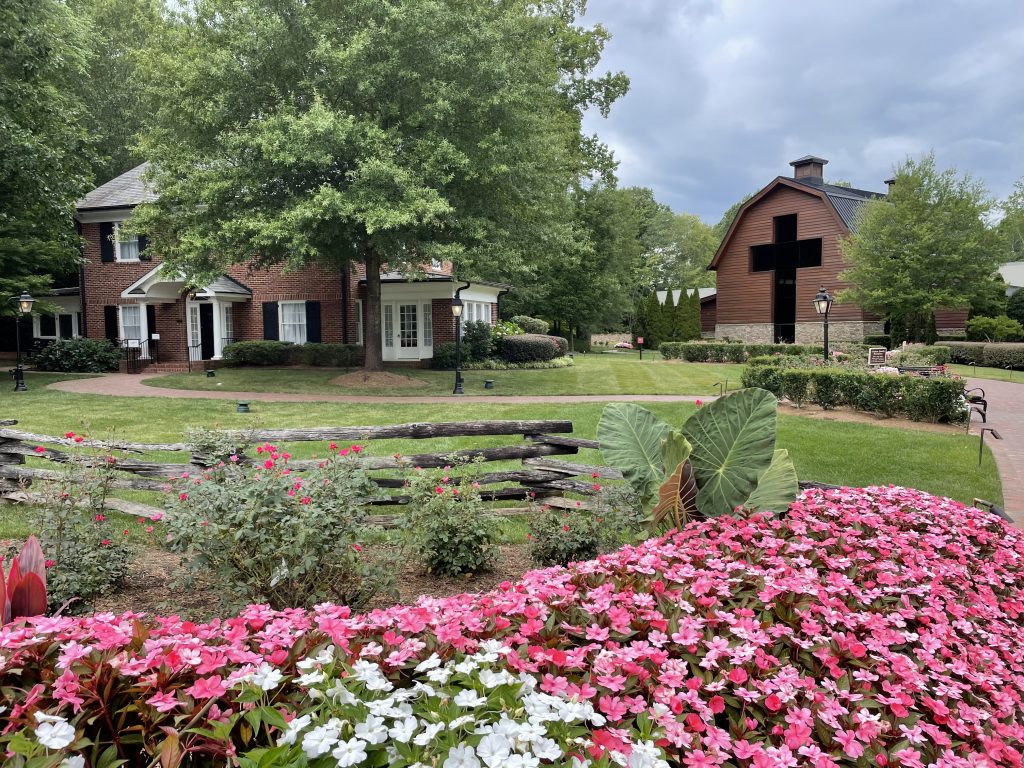
Visitors learn a little about Billy Graham and his life (1918-2018). He went from “humble farm boy” to “preacher to millions” with no trajectory in between. The journey mostly seemed an homage to photographs of Graham with famous people. We literally had to Google Graham after we left, where we learned about the unforgivable way he treated the LGBT community; at least he wasn’t rocked with financial and infidelity scandals like some of his peers.


Check out the absolutely amazing feathers on the Grey Crowned Crane in the video!
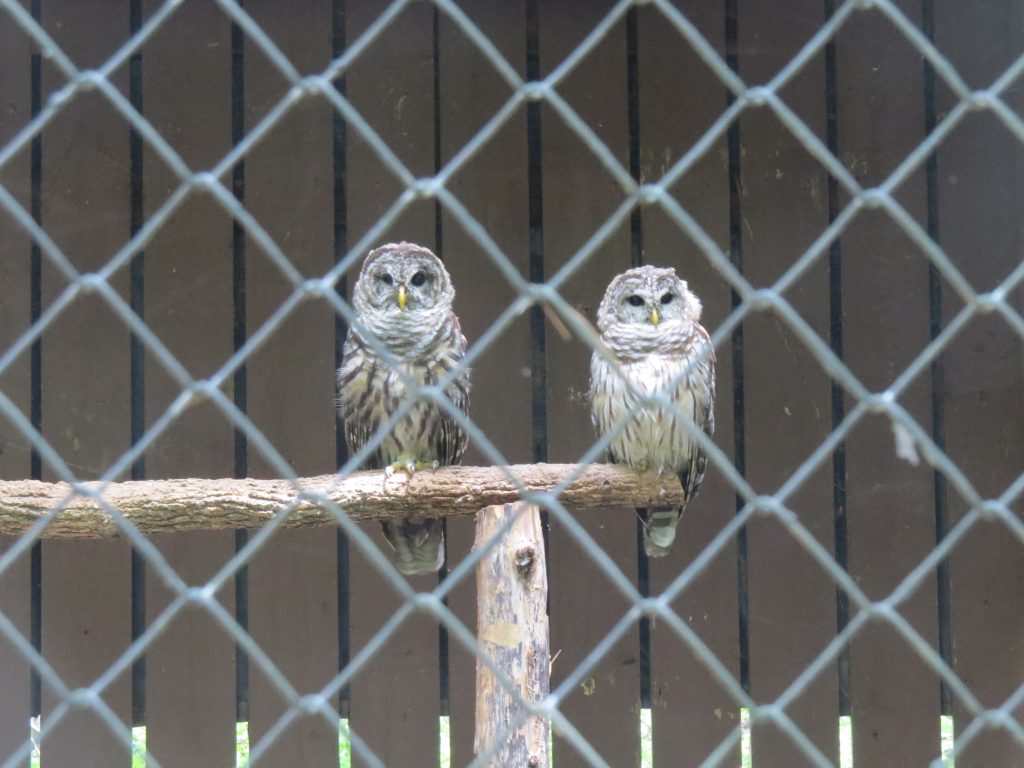
Doug and I love raptors, so we stopped in at the Carolina Raptor Center in Huntersville. They have a Raptor Trail with quite a few birds in their individual homes, which unfortunately had fence or mesh coverings that made photography a bit difficult. These are birds that were rescued but cannot be rehabilitated and released back into the wild, or are bred for educational purposes. They also have flying demos, camp programs, and other activities, as well as a hospital that has admitted more than 25,000 birds since their founding in 1975.


Given my healing heart over Mr. K (yep, stilling routinely bursting into tears), of course we stopped in the American Museum of the House Cat in Sylva. Not only was it well-rated, someone earlier in the day actually said we must go. I’ll just say that collecting thrift store items with cats on them and arranging them in display cases and on the walls does not a museum make. I was a little dumbfounded we had made an effort to get there before they closed, and paid for the privilege. The good news is, their net profits fund a cat rescue center, and that I can get behind.
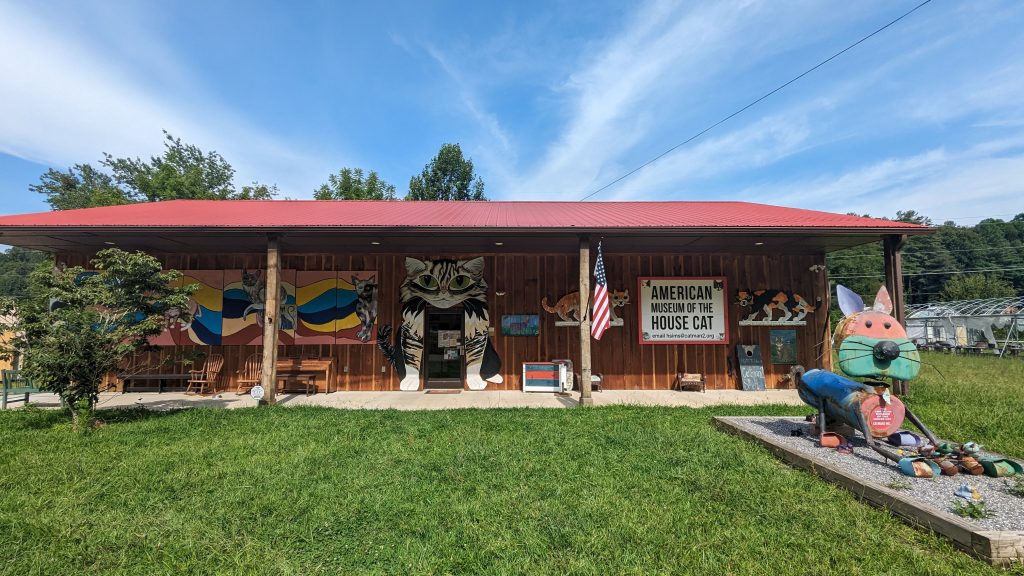
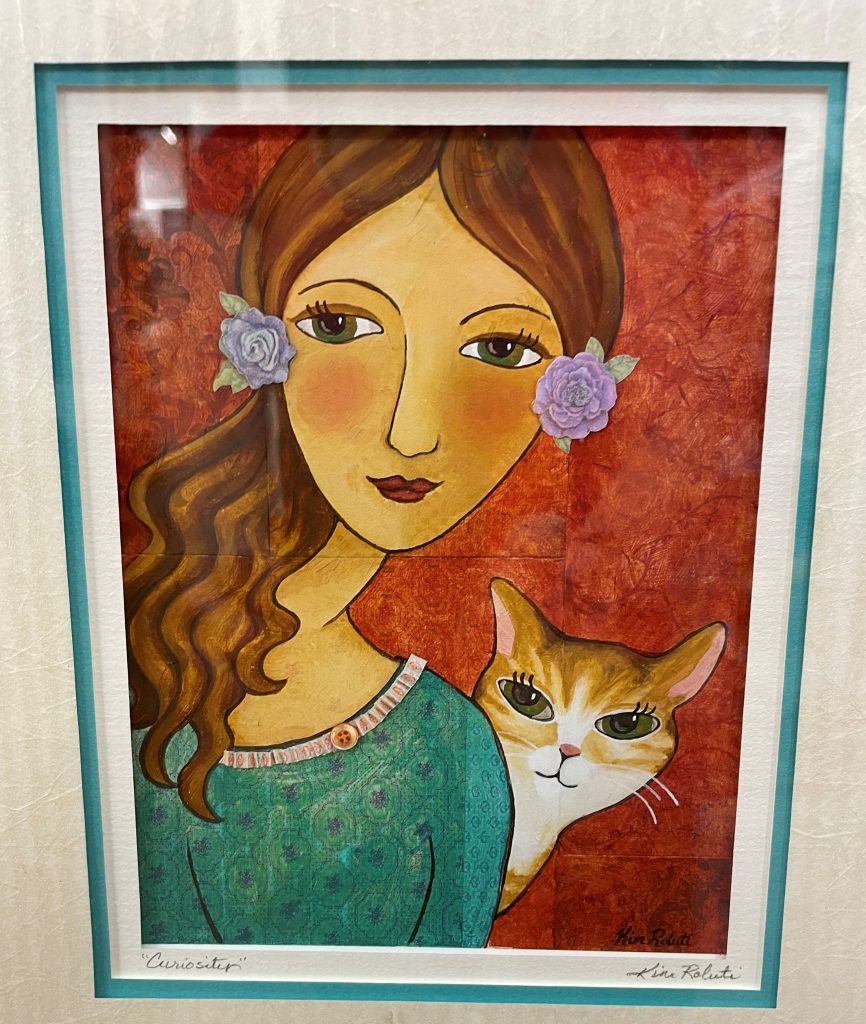
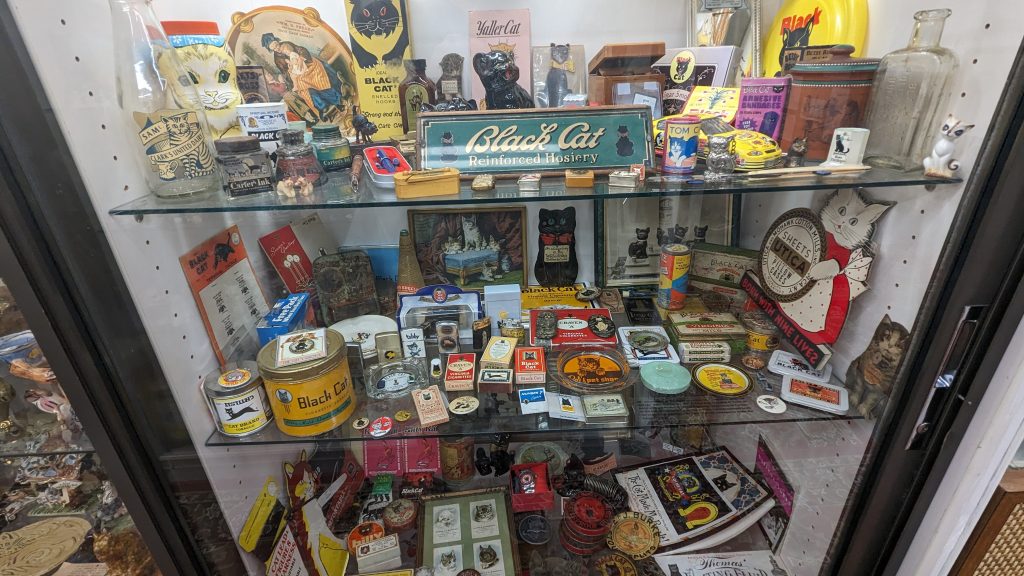
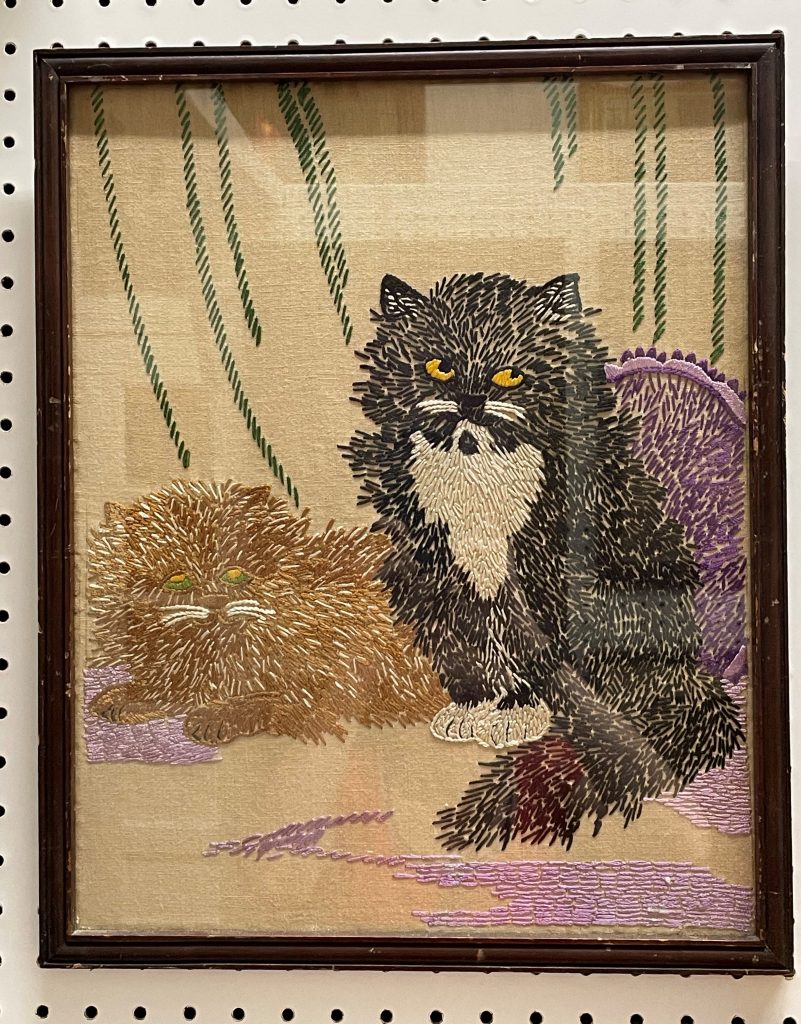
Sometimes you go to a museum and you feel bad that you aren’t more into it, when it is clear that someone put their heart and soul into the exhibits. The Greensboro History Museum was like that for me. They had a lot of exhibits, we went all through it, but weren’t wowed by anything.
We went in part because of their O. Henry and Dolley Madison exhibits, which Doug appreciated considerably more than I did.
Dolley, wife of fourth president James, was born in what is now Greensboro. There was a huge display of random items related and maybe-related to her.
William Sydney Porter (pen name O. Henry) was also born in Greensboro, so there was a small display on him (where we learned he was not a very good person, including serving a term in prison), and also a school room where his aunt taught school (and him), and a pharmacy where he had worked.
Famed broadcaster Edward R. Murrow, another native son of Greensboro, was also represented in the museum.
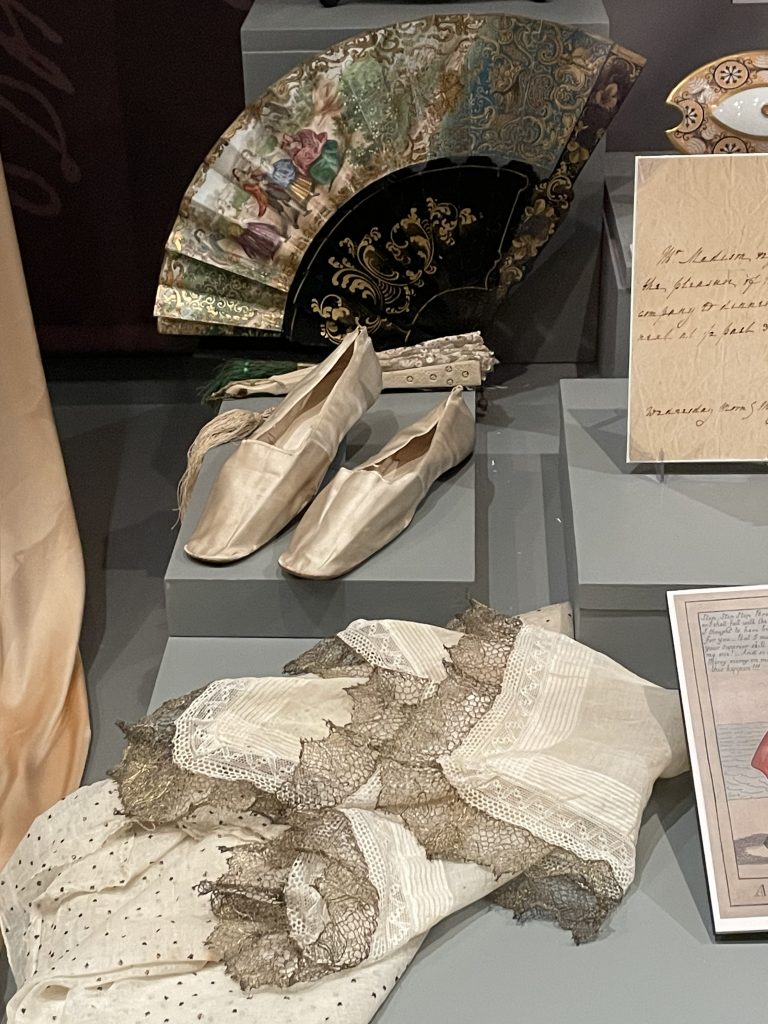
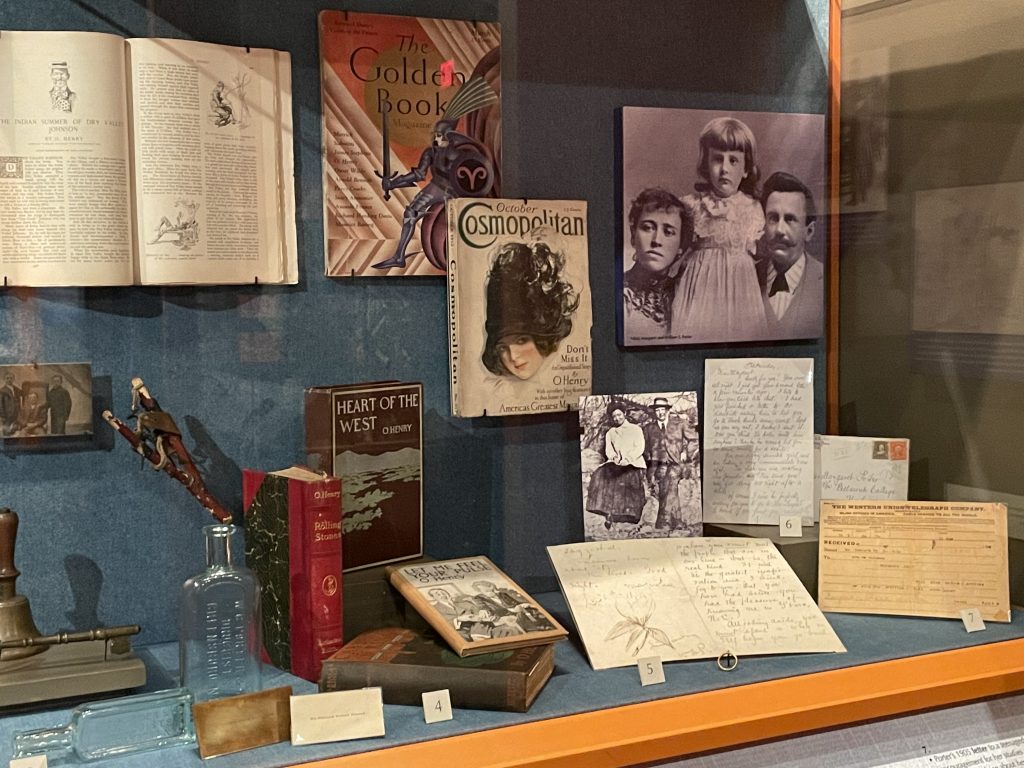
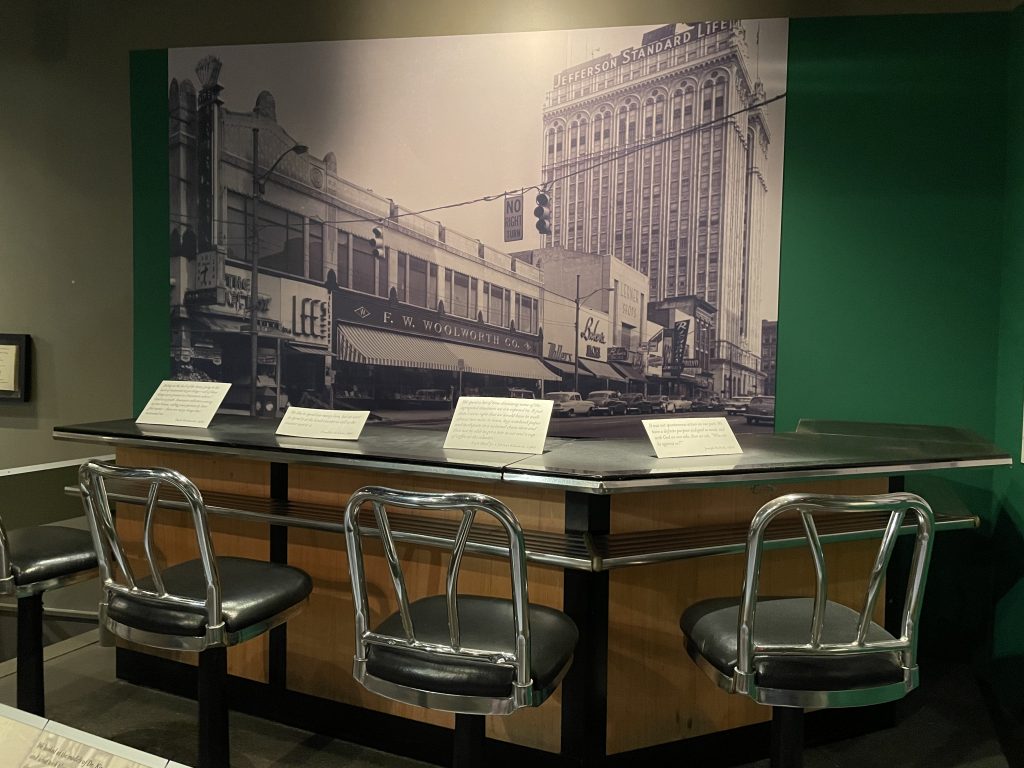
The Museum of the Alphabet in Waxhaw, Ga., is a quirky but apparently comprehensive museum devoted to the history of the printed alphabet. Many cultures are represented with exhibits that explain the evolution of their alphabets over thousands of years.
The museum is free to visit and is operated by JAARS, a non-profit missionary organization that was founded in 1948 and aims to translate the bible into every language possible. Starting with this objective, the organization has embraced the use of technology to facilitate translation and communication, and its linguistic efforts have been both praised and condemned. Some Central and South American countries have banned JAARS as they are seen as trying to eradicate indigenous cultures in their countries. Nonetheless, the organization is so large that its headquarters complex in North Carolina where the Museum of the Alphabet is located is its own town of 600 full-time residents. But once you understand the organization’s mission, the museum’s agenda clouds the attempts at education.
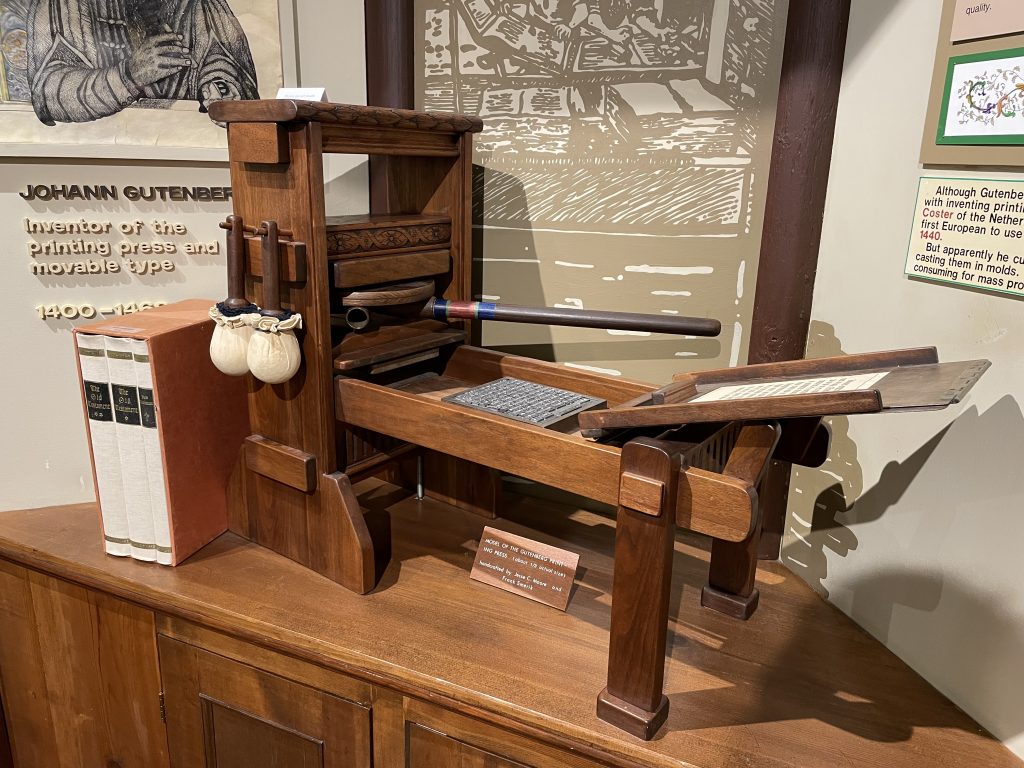





One thought on “Select Sites in North Carolina”